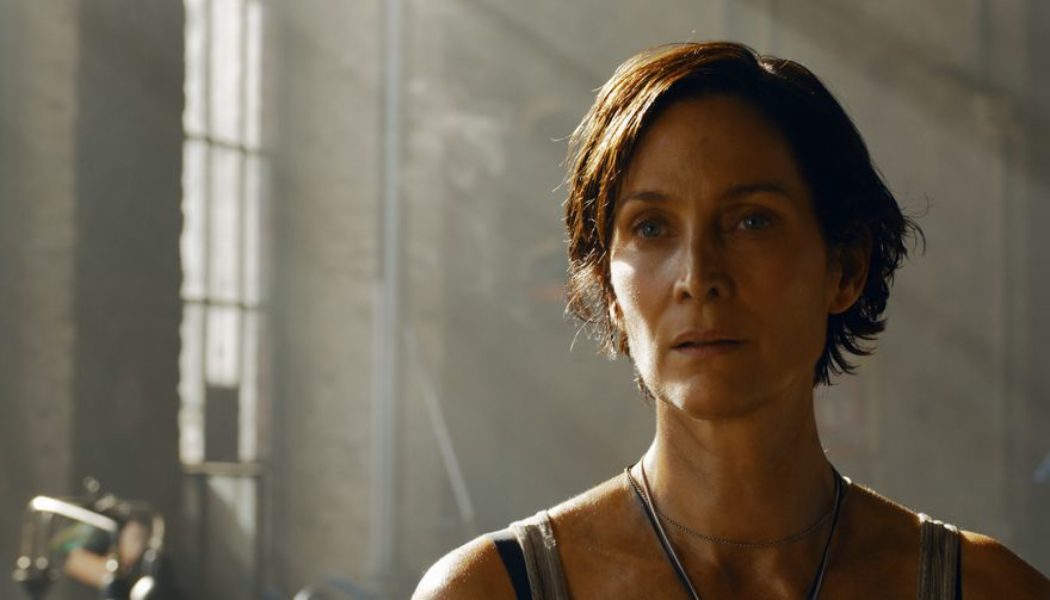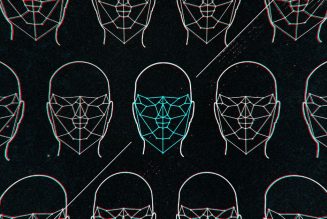The Matrix Resurrections warned me its existence was a bad idea, and I kept watching anyway. I really have nobody but myself to blame.
The Matrix Resurrections is, to its credit, a fairly weird film — but one that’s often more concerned with being self-aware than being good or enjoyable. Directed by Lana Wachowski instead of the typical Wachowski-sister duo, Resurrections starts with an intriguing bit of metatextual loopiness before devolving into a tepid sequel. It’s a gratingly uncool and reactive cut-up of an effortlessly cool and timeless work, albeit seemingly deliberately so. It seeks to dissect the adulation and mythos that have grown up around The Matrix over 22 years but without the masterful craftwork that inspired that adulation in the first place. And worst of all, the kung fu isn’t very good.
Resurrections is a direct sequel to 2003’s The Matrix Revolutions, continuing the story of Neo, Trinity, and a few other well-known characters from the Matrix trilogy. (If you don’t know who these people are or you haven’t thought about them much since then, I would strongly recommend brushing up.) But in spirit, it’s a sequel to the entire Matrix cultural phenomenon that began in 1999. And without getting into specifics, I don’t mean this in some abstract thematic way. Resurrections’ narrative is very directly responding to decades of people analyzing everything from The Matrix’s bullet time sequences to its transgender subtext.
[embedded content]
It’s a promising premise for a new installment in the series, and the early execution is fantastic. Resurrections’ opening calls back to an iconic Matrix scene while stylishly introducing new characters and teasing a compellingly trippy plot, complete with a new palette that spices up the series’ classic monochrome with patches of slick color. It’s followed by an effectively cringeworthy sendup of a specific media industry that will remain nameless. It echoes Matrix contemporary The Thirteenth Floor — as well as its predecessor, the Rainer Fassbinder film World On A Wire — with a story about losing track of the line between reality and fantasy but freshly made for a world where that philosophical dilemma has permeated pop culture.
If you want to know as few plot points as possible about The Matrix Resurrections, you can skip this paragraph. But if a little context is helpful, the film begins with Neo (Keanu Reeves) and Trinity (Carrie Anne-Moss) having been reinserted into a version of the Matrix simulation. The pair don’t know each other and have no memory of their earlier selves, and the former has achieved lonely fame inside the simulation while the latter has a family and a quiet life.
Reeves is a lot of fun to watch in the film’s first act, where he’s playing a world-weary man who’s sick of being lauded as a visionary for creating something he now finds fundamentally silly even as it nearly ruined his life. (A shot of him lying in a bathtub with a rubber duck on his head is as good in context as it was in the film’s trailer.) Moss gets to try out a less austere and more human version of Trinity, and her story touches on interesting questions about what attachment means inside a virtual world. The original Matrix was about a young, alienated loner, but Resurrections takes more seriously the idea that you could find meaning with other people in an activity that remains essentially fake.
From the beginning, though, the writing often feels disposable. Where The Matrix yearned to talk about big ideas like free will and the nature of reality, Resurrections is a series of burns on techbros, obsessive fans, the media industry, people who think quoting movies makes them cool, and other lesser contemporary villains.
:no_upscale()/cdn.vox-cdn.com/uploads/chorus_asset/file/23115219/rev_1_MX4_FP_0130_High_Res_JPEG.jpeg)
The original film was obviously also a product of its time, riffing on tropes about corporate cubicle workers, virtual reality utopianism, and 20th-century ennui. But it used these specifics as the building blocks for a world that was self-contained and compelling even after the underlying cultural moment passed. In The Matrix Resurrections, these elements are tangential commentary that never anchors itself in a larger plot — particularly because when that larger plot does barge in, it’s flat at best and vicariously embarrassing at worst.
Like the original Matrix trilogy, Resurrections eventually revolves around questions about Neo being “the One,” a figure with the power to control the Matrix. But unlike those films, Resurrections doesn’t establish why it matters.
The Matrix set its stakes high by painting a nightmarish future where humanity was perpetually at the brink of total enslavement, and its few free members lived a life of constant fear, and the One was a weapon that resistance fighters had spent their whole lives searching for. Its oft-maligned sequels eased up on this grimness, but in exchange, the films introduced characters with homes and families and orgiastic dance parties — most of them cared about Neo, not because of some idol-like affection, but because he might save those things. (The key exception, a figure introduced in The Animatrix dubbed “The Kid,” had his hero-worship played as a poignant joke.) Even a character like Laurence Fishburne’s Morpheus, who built his life around finding and protecting Neo, was motivated as much by the concept of faith as a personal attachment to the man.
There’s none of this in Resurrections. For one thing, the film barely bothers explaining what happened as a result of The Matrix Revolutions’ ending, when Neo’s powers finally helped him broker peace between humans and machines. Far from ignoring the sequels, it directly incorporates footage from them and features some returning characters. But it also quietly reverses large parts of them for no satisfying reason, making the import of everything Neo and Trinity did in those films unclear.
For another, the film’s new characters have virtually no motivations outside a fandom-like obsession with Neo. The heroes, who are functionally almost interchangeable except for the blue-haired Matrix escapee Bugs (Jessica Henwick), think he’s an awesome guy and want — as a literal stated mission — to help him get his “mojo” back. The villains are obsessed with tormenting him for underexplored reasons, even when that gets in the way of their theoretical actual job.
:no_upscale()/cdn.vox-cdn.com/uploads/chorus_asset/file/23115229/rev_1_MX4_FP_0050_High_Res_JPEG.jpeg)
Meanwhile, Neo himself has no interest in anything except rekindling his relationship with Trinity. The Matrix films made the love story between the two an ever-larger part of the narrative as the trilogy progressed, and it’s obviously what Wachowski wants to focus on here. But it’s written in a way that makes Neo come off as either selectively amnesiac or chillingly unconcerned about the fate of the human race. His incuriosity about anything except Trinity also wastes opportunities to help explain foundational plot points, which instead get brought up and almost immediately abandoned. And the pair’s interactions, despite being the supposed heart of the film, are oddly disjointed. Wachowski has definitely read all those essays about Trinity Syndrome, but Trinity’s character arc is still patchy and weak — full of moments that describe the existence of conflicts instead of letting them unfold.
The Matrix’s sequels had countless flaws, but they showcased the Wachowski sisters’ straightforward knack for visually memorable set pieces and elaborate choreography. Resurrections has only one sequence that even approaches the fun of The Matrix Reloaded’s sprawling car chase or The Matrix Revolution’s giant mech battle, and it’s over far too quickly. It barely tries to capture the magic of the original Matrix’s gunplay and wire-fu, either. Its fight scenes draw more strongly from the post-Bourne Identity school of choppy pragmatic combat, and they become progressively more perfunctory, more pointlessly derivative, and harder to follow thanks to a penchant for crowd scenes involving the film’s equivalent of zombies.
But most frustratingly of all, Resurrections seems dedicated to shooting itself in the foot — and distinctly not dodging the bullet — with Matrix callbacks that undercut its own strengths.
:no_upscale()/cdn.vox-cdn.com/uploads/chorus_asset/file/23115226/rev_1_MX4_31141r_High_Res_JPEG.jpeg)
In a couple of casting decisions that are technically spoilers but have been confirmed online already, the film introduces Watchmen’s Yahya Abdul-Mateen II as a new iteration of Morpheus and Mindhunter’s Jonathan Groff as a new version of the villain Agent Smith. It suits the film’s stated theme of evolution and repetition in theory, but in practice, it puts both men in the position of rehashing past iconic performances — in Abdul-Mateen’s case, from one of the most powerfully charismatic actors in Hollywood. He ends up playing little more than a collection of glib quips in an admittedly great suit, while Groff gets his shot at a uniquely hateable performance smothered by intercuts to Smith’s original actor Hugo Weaving.
There’s no good reason to do this. Narrative continuity doesn’t demand either man appear: Smith’s destruction was a central element of The Matrix Revolutions, and Morpheus was canonically murdered in a video game by flies. Both roles could have been more compellingly written as original characters. The film runs in too many directions for the reincarnated Smith and Morpheus to spend time grappling with their evolution, they retain almost none of their original motivations, and Neo is too busy worrying about Trinity to engage with either. (The fact that Fishburne and Reeves had by far the most chemistry and the best-shared arc of any two Matrix cast members makes this doubly sad.)
Smith’s presence is particularly unnecessary because he’s not even the primary antagonist. That dubious honor goes to a new character who’s written like a chatbot trained on the comments in a “high-IQ rationalist skeptics” subreddit, except that this description at least implies some kind of explanation for why he would exist.
Instead, the recasting feels like an act of frustrated cynicism, the logical conclusion of Marvel-style storytelling where viewers can only care about a new character if they’re a reincarnation of an old one. Given the explicit narrative of the film, I’d even believe the awkwardness of it is intentional. Resurrections spends its entire first act telling audiences that a new Matrix installment would be a hollow byproduct of corporate coercion dressed up as an innovative reworking of a classic. Like almost any recent major franchise film or game that supposedly “deconstructs” its predecessors, it’s given the freedom to posture at subversion before delivering the exact thing it’s required to.
As someone who was shaped deeply by The Matrix, it’s a little sad to walk away from The Matrix Resurrections with the impression that fandom and franchise-based media have soured its legacy badly for Wachowski. I was a tween when it premiered, and it’s the first film I can remember processing as a kind of overwhelming aesthetic experience instead of a story that happened to involve moving pictures. Watching it decades later, it’s a perfect gestalt of memorable dialog, alluring conspiracism, kinetic camera work, and stylish violence. The Matrix is more than ripe for a self-aware joke — but not one built for a machine that won’t allow it the decency of a punchline.
The Matrix Resurrections will premiere December 22nd in theaters and on HBO Max.









